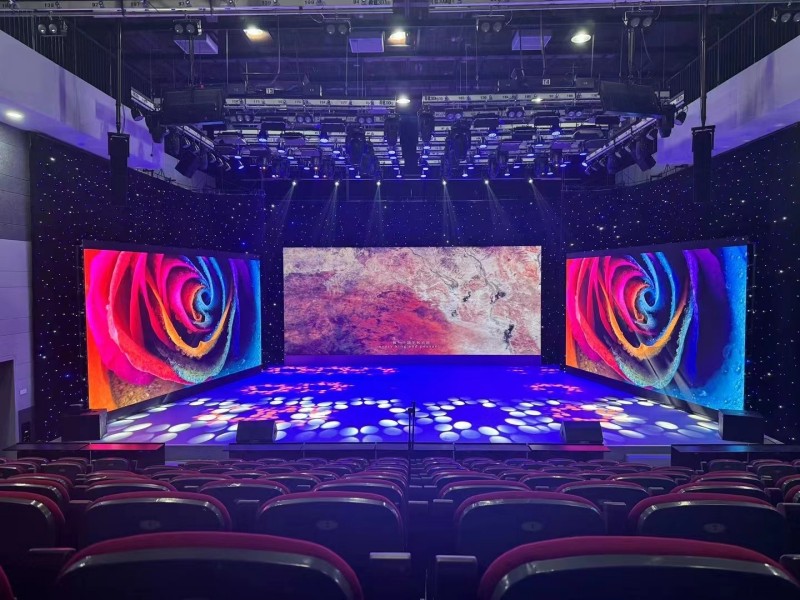Nowadays, LED displays are used in the design of many large-scale stage backgrounds to display background images of various interpretations or big data displays in real time. Through comprehensive computer control and the cooperation of sound and lighting systems, audio and video integrated display functions are realized. So, how to design the stage background LED display production plan? Next, the HD COLOR editor will analyze it from a professional perspective, hoping to provide you with some help.
Although we often come into contact with LED displays around our lives, the design solutions for LED displays in different situations are different. Technical issues such as installation methods and signal display are usually designed. At this time, it is necessary to Professional technicians will solve it. For stage background situations, different background sizes and viewing distances and other customer factors, choose a reasonable and efficient solution within a reasonable budget, and splice it into a large screen through reasonable installation methods to achieve synchronous display of various signals, as follows :

Before that, we have to decide the size of the stage background location, including length and height, based on the stage area and the size of the entire venue space. These two parameters directly determine how big our LED display can generally be. Generally speaking, the stage area is relatively large. The height is generally more than five meters, and the width is not limited. The bigger the better, and the reference factor is also the distance between the audience in front of the stage, especially the users in the back row. The distance from the stage background large screen is relatively far, which also determines the size and specifications of the stage background LED display. After determining the production size of the stage background LED display, we need to design the overall plan based on two factors: budget and viewing distance, such as how to splice the LED display, what is the installation ratio, what is the point spacing, etc.
Generally speaking, when the budget is controllable and the product quality is guaranteed, try to make the LED display screen behind the stage larger in size and with a smaller pixel pitch. This is also the idea behind the design of the entire solution, making the display area larger. , this can ensure that the video or picture will not be deformed when displayed on the computer. We can generally design the overall 16:9 display area based on the size of the stage background display to ensure that videos or pictures on the computer can be displayed. It will not deform or stretch when taking pictures.
Then, the choice of dot pitch is very important, because the size of the dot pitch of the LED display directly determines the clarity of the large screen. Generally speaking, the smaller the dot pitch, the higher the resolution and the better the clarity of a large screen. For applications such as large stages, the number of viewers is relatively large and the viewing distance is relatively long. The requirements for dot pitch are not very high, but the viewing experience of front row viewing must also be taken into consideration, so the choice of dot pitch cannot be too large.
At present, the commonly used point spacing specifications for stage background LED display production include P1.9, P2.6, P2.9, and P3.9, which generally do not exceed P3.9.
Since some stage occasions are indoors and some are outdoors, if it is outdoors, you need to consider its waterproofness, convenience and higher brightness; if it is an indoor occasion, an ordinary LED display screen can meet the needs. In addition, since many stages require photography and videography, it is necessary to use a high-brush series, that is, the LED refresh rate cannot be lower than 3840Hz, so that it will not be affected by water ripples when taking pictures or recording, and the video display will be smooth.
After determining the installation size and specific specifications of the stage background LED display, you also need to confirm the installation method, because some stages are against the wall and can be installed directly on the wall: some are not against the wall, so a three-dimensional installation is required. stand. When fixing, you also need to consider issues such as convenient maintenance and inspection.








